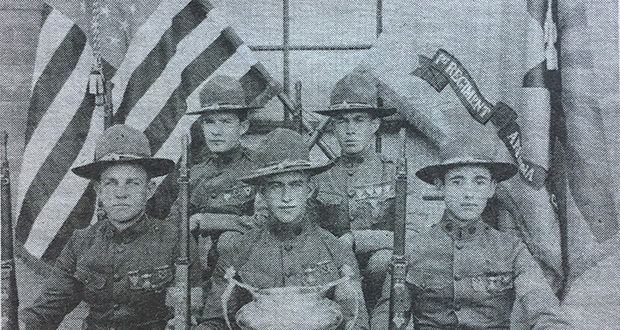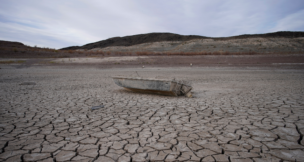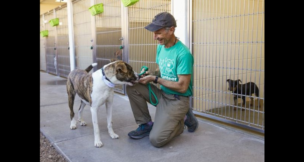The Capitol Floods
Arizona Capitol Reports Staff//November 2, 2007//[read_meter]
On the front page of The New York Times and other newspapers throughout the Midwest and East Coast, it was mistakenly reported in 1921 that “a wall of water eight feet high and several miles wide…washed out part of the Grand Canal…The flood waters extended from Phoenix to Glendale, a distance of nine miles…”
Much like today when natural disasters result in calls from relatives checking on our status, these news reports resulted in more than 20 calls to Police Chief George Brisbois of Phoenix asking about the status of loved ones in the area. Calls came from Virginia, Ohio, Indiana, Illinois, Kansas and Colorado. The police chief stated “some steps should be taken to control these erroneous impressions.”
After an unusually dry summer, what we might call a monsoon moved into the Valley from the north. Heavy rains of close to two inches poured into the Cave Creek watershed.
Instead of using our current term of monsoon, local newspapers blamed “Jupiter Pluvius” for the rains. This was a reference to the god Jupiter being the rain maker or the reliever of droughts.
The water roared down the Cave Creek Wash. When the flood reached the Arizona Canal, the canal quickly collapsed in several spots sending flood water and the water from the canal further south. Several hours later, the water breached the Grand Canal with a channel a mile wide from Seventh Avenue to the west.
As had occurred numerous times in the past, the neighborhoods from McDowell to Van Buren and Seventh Avenue to 19th Avenue had up to five feet of water covering the area. The water then continued south on 18th Avenue along the west side of the Capitol. The first floor and basement of the Capitol were flooded. The flood continued south and broke through the railroad tracks before reaching the Salt River.
More than 700 houses were flooded. The court house was opened for those displaced by the flood. More than 200 people were moved there and began sleeping in the court rooms and corridors.
The Maricopa County sheriff sent out eight wagons and teams to rescue people in the flooded area. Other officers and firemen used horses to bring people out of the area.
Some people refused to leave. One woman would not go unless the rescue crew would rescue her cat and six kittens, parrot, dog and a canary. She was left in her house with her menagerie.
One couple was driving on 17th Avenue and Adams when the flood hit. The water got high enough that they were trapped in their car. By the time they got to dry ground, the water reached high enough to go over the hood of the car.
The flood was so large that bales of cotton were floating throughout the neighborhood. It was reported that one of these vessels had a skipper — a red rooster— who was in charge of the bale as it floated along.
State Librarian Con Cronin reported the wood pile at his home was washed away by the flood. However, he said the old wood pile was replaced by a larger pile of wood of a different kind.
Cronin, who lived about three blocks west of the Capitol, took the family downtown to dinner before the flood. They left the family dog ‘Rags’ at home. Rags regularly went to the Capitol with Cronin. When the flood hit, Rags must have decided the Capitol would be a safer location than the house. Rags made the rough journey through the flood water and swam into the east door of the Capitol. Rags was described as “…a glad but weary pooch.”
One farmer affected by the flood reported he had brought “…my thoroughbred hogs on the porch and was just getting ready to take them upstairs. We have put the turkeys and chickens in the trees (and) have the small calves in the parlor.”
The Capitol building had 11 1/2 inches of water running through the first floor. It was reported “the Capitol building looked like Belgium yesterday, or the trenches on the western front after a long, wet season.”
The flood damaged records in the Attorney General’s Office and the State Auditor’s Office. The heating system and elevator system in the basement were damaged. The state entomologist and State Dairy Inspector’s Office were in the basement and were completely destroyed.
It was also noted that the flooding of the Capitol basement destroyed “…great cases filled with records running back to the organization of Arizona as a territory, and other public documents belonging to the Office of the Governor and the Secretary of State. This loss, of course, will be irreparable.”
Maricopa County, the state, the city of Phoenix, and the Salt River Valley Water Users Association quickly put up $350,000 ($3.4 million in current dollars) to build the 1,700-foot long Cave Creek Dam in what is now northeast Phoenix. The dam would impound water from a 310 square mile watershed. The Arizona Gazette proudly predicted “…it is a fact of general scientific knowledge that nowhere in the world was there ever a flood of sufficient volume…to overtax the capacity of the dam and reservoir.”
Mike Miller. Photo courtesy of Arizona State Library, Archives and Public Records, Archives Division, Phoenix, #00-0226.


















